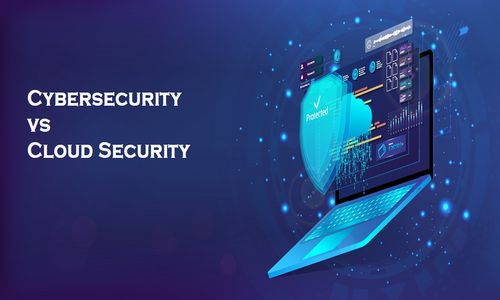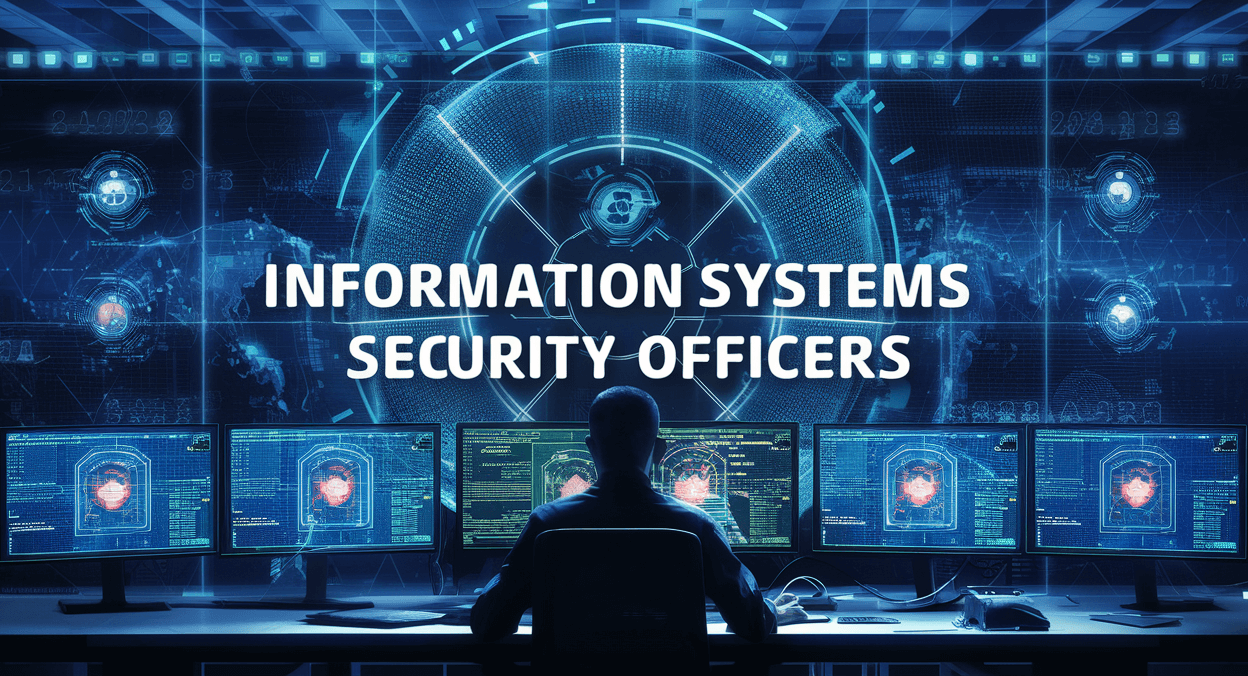The exponential growth of cybercrimes increases the vulnerability of devices and data. Magnitude of such crimes has necessitated organizations to take action to safeguard their data and personal data. Organizations tend to deploy cloud or cyber security to safeguard and defend against digital threats. Cybersecurity and cloud security are different since the former deals with all facets of information technology while the latter exclusively addresses the security of cloud computing environments. Even if their meanings diverge, they each employ a small amount of the same technology to carry out their respective tasks. So let us examine the main variations between the two.

Jump ahead to
What is Cybersecurity?
Protecting sensitive data and critical systems from online threats are known as cybersecurity. It hinders illegal access to computer systems and data centers to protect information privacy. Additionally, it aims to lower the risk of cyberattacks and safeguard against the unauthorized use of systems, networks, and technology. Moreover, cybersecurity measures are created to counter attacks on network systems and applications, whether such threats come from inside or outside an organization.
What is Cloud Security?
Cloud computing environments or cloud-based systems, including cloud data, apps, networks, and infrastructure, are protected by a set of policies, practices, and technologies referred to as cloud security. Its goal is to safeguard organization systems and data against risks and attacks. Cloud security also strives to satisfy regulatory standards for organizations using cloud services. In addition, cloud security providers offer their customers the latest cloud security technologies to protect their data against known and predicted threats.
Difference between Cybersecurity and Cloud Security
Personal Data Security
Cybersecurity:
Cybersecurity protects servers from malware, viruses, and other threats. However, it cannot access or decrypt encrypted data sent from a user. Therefore, it requires users to take action to secure their personal information actively. Employees can avoid clicking on suspicious links in emails through strong passwords and setting up two-factor authentication to manage cyber security.
Cloud security:
Applying cloud security ensures personal data is well-protected by excluding the traffic that accesses cloud-stored data. Another such measure would be to implement modern cloud security practices to divert such traffic directly to the cloud instead of passing through other servers that could gather the user’s data. Cloud security controls prevent unauthorized users from accessing data while allowing authorized users to do so.
Liability of Security Breach
Cyber security
Organizations are responsible for safeguarding sensitive data kept on their devices. They must ensure that only personnel with proper authorization has access to it. Employees without such authorization might receive a penalty or go to jail if malware infects their computer or someone uses it without their consent. Manufacturers of these devices are liable if any of those mentioned earlier occur. As a result, manufacturers must ensure they are safe and mitigate vulnerabilities as quickly as possible.
Cloud Security
Cloud service providers use advanced technology protection to prevent data theft and leaking. Companies are responsible if consumer data is stolen and sold. Thus they must protect client privacy and keep it safe from hackers. As a result, cloud security is crucial when storing personal data on the cloud.
Security Threat Detection
Cyber Security
Antivirus tools are used in cyber security operations to find security risks. The fundamental problem with antivirus programs is that evolving threats usually take time to detect. They must often stay updated and ahead of hackers as they can constantly attack against cyber security controls in case of gaps.
Cloud Security
Cloud Security uses artificial intelligence to detect and comprehend threats automatically. Unlike the conventional approaches, it does not need upgradation. Artificial intelligence is always aware of new hacking techniques as they emerge. Therefore, data is better protected from cyberattacks, decreasing the likelihood of an attack.
Data Backups
Cybersecurity
Data backup is the process of using hardware or software on both internal and external storage media to recover data in the event of a disaster. Dropbox Backup is used to back up files, emails, etc.
Cloud Security
Following the cloud security policy, all information on the servers is backed up at regular intervals and securely. Additionally, backups are created for primary and secondary storage, enabling the recovery process to be initiated if data is lost.
Storage of Personal Information
Cybersecurity
According to customer requests, all personal data is held centrally, in an encrypted format, and with access granted to authorized individuals.
Cloud Security
The cloud provider classifies data to keep it safe. They employ various layers of protection for this, such as encrypting data before transferring it to the servers. They also give customers access control and encryption keys to safeguard their privacy and ensure that their customers have legal access to their critical information and papers.
Which is better: Cybersecurity or Cloud Security
It is becoming evident that the cloud simplifies data management, leading to greater security, as more businesses move their data to the cloud to increase scalability and cost-saving options. However, whether a person or a business chooses cloud security or cyber security ultimately depends on the amount of security they need. When compared to cybersecurity, cloud security is far more effective in how it operates, but it is also slightly more expensive. Professionals can earn CISSP Certification, which allows them to demonstrate proficiency in developing, deploying, and monitoring a robust cybersecurity system. Additionally, owning this esteemed certification enables individuals to obtain practical expertise in applying industry-standard practices to safeguard an organization’s digital data.



